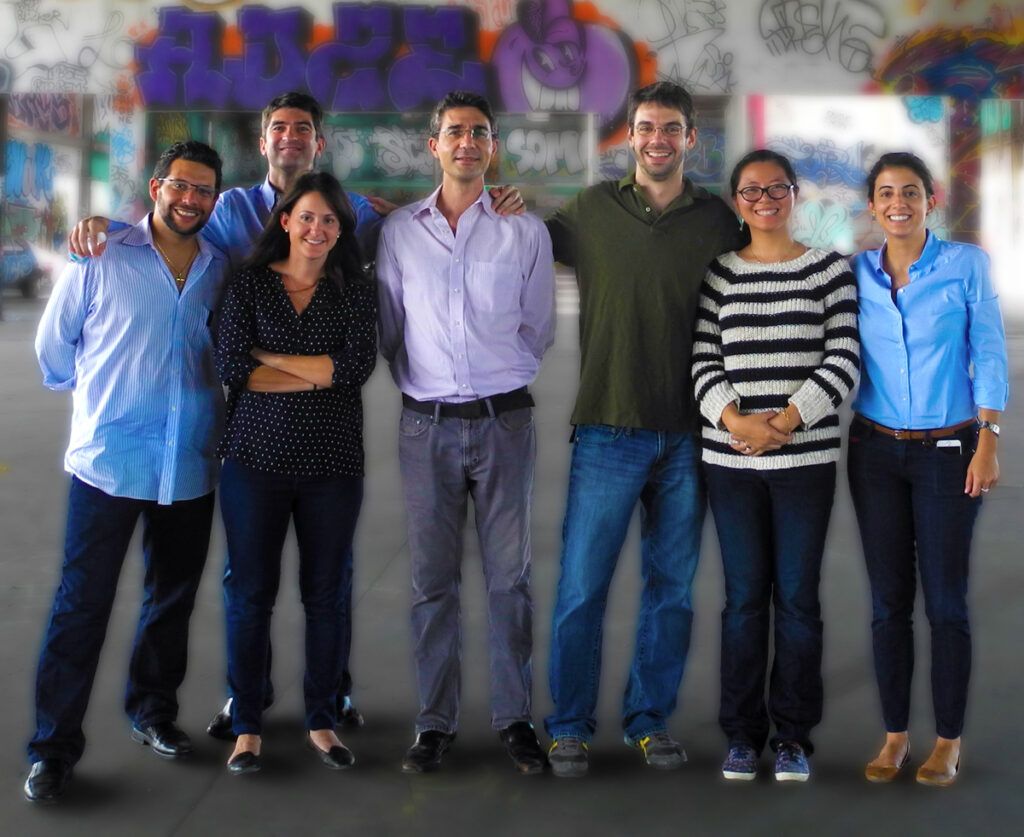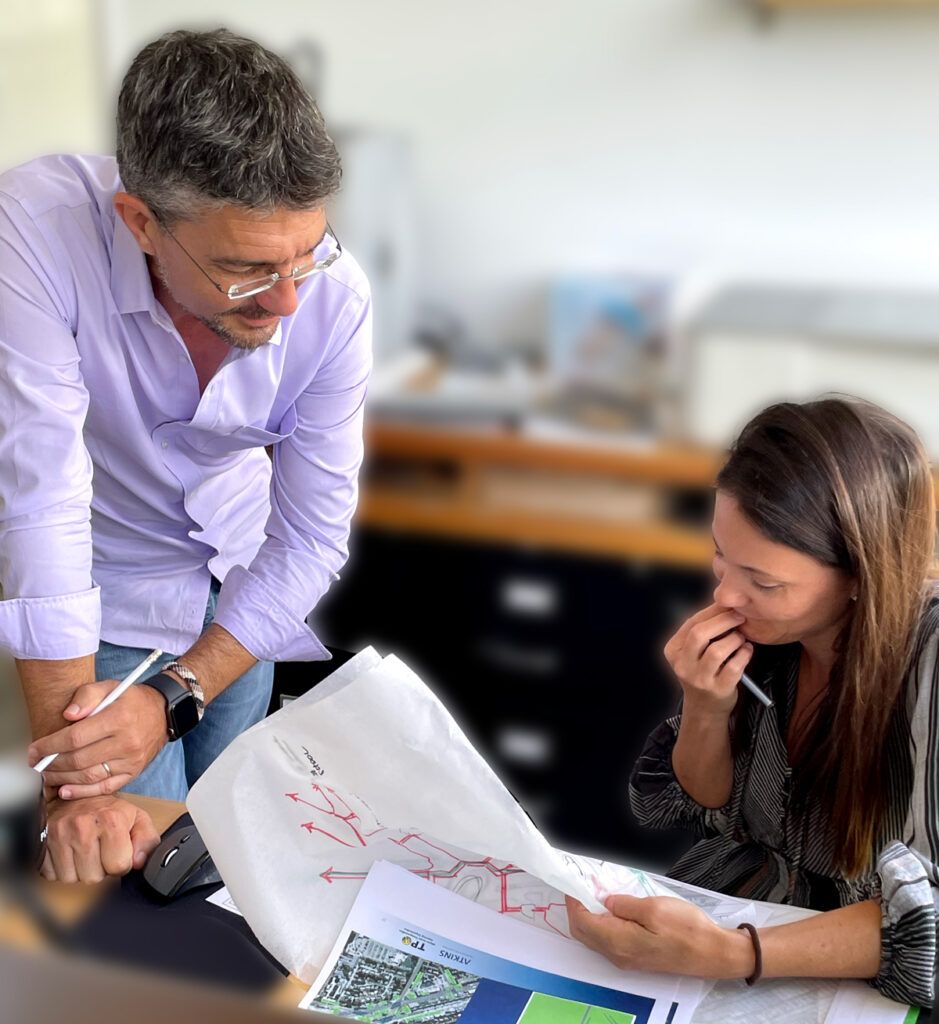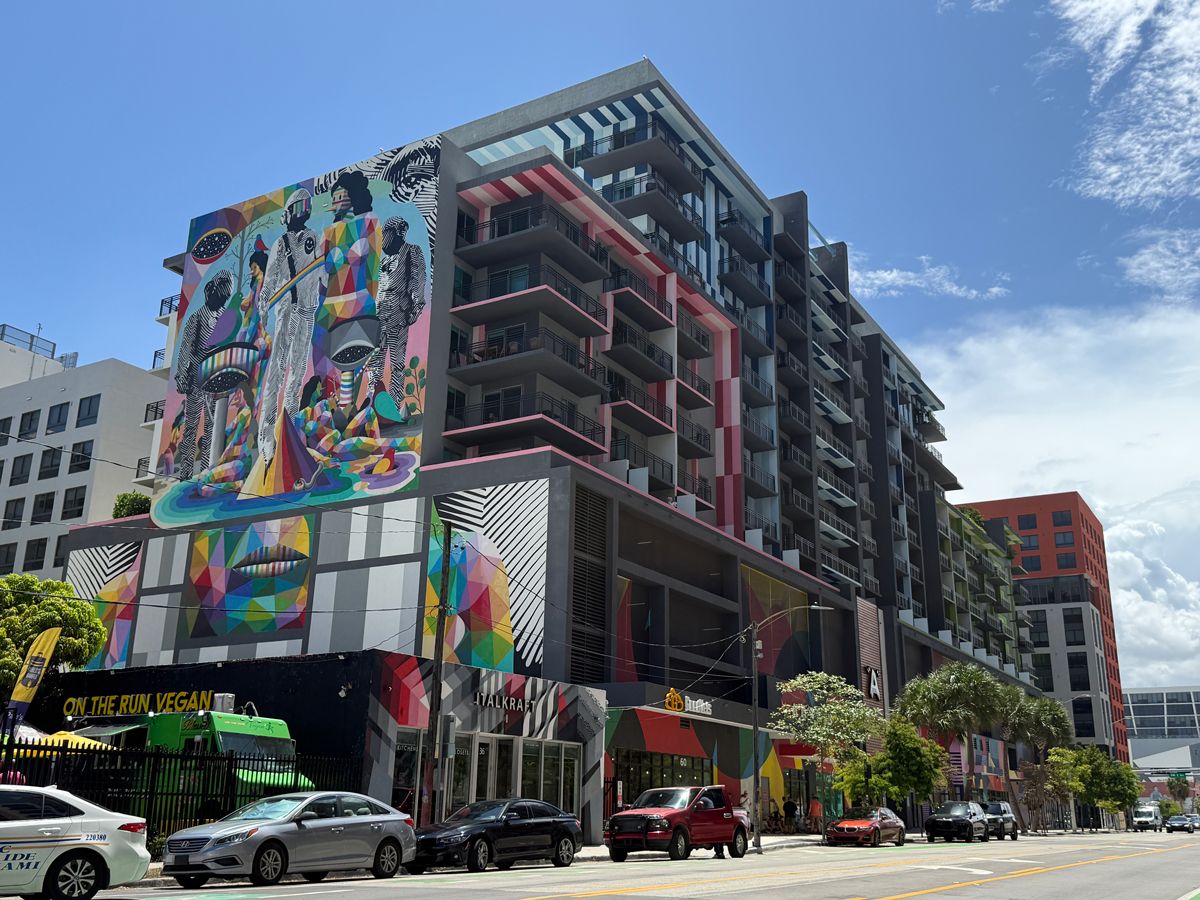Few neighborhoods tell the story of Miami’s evolution like Wynwood. Once a declining garment district, Wynwood now is one of the city’s most popular destinations. Today, locals know Wynwood for its art and entertainment, but a rich history of community-driven revitalization lies behind these murals.
Wynwood didn’t change overnight. A decade ago, it was still very much an industrial district—gritty, utilitarian, and rough around the edges. Warehouses and factories dominated the landscape, giving it a raw, unpolished feel. Though overlooked by most, Wynwood’s low rents and spacious warehouses proved attractive to the artists and creatives that slowly trickled into the district.
Change was on the horizon, and you could feel the momentum building. Soon, stakeholders were faced with a new challenge: how do we guide the transformation of Wynwood into a world destination without losing the essence that made this district unique?
When Plusurbia Design introduced the Wynwood Neighborhood Revitalization District (NRD-1) to the City Commission in 2015, the goal wasn’t just to rezone; it was to give Wynwood the tools to grow on its own terms while making space for people, alternate uses and a lively street environment.
Ten years later, Wynwood still is unmistakably Wynwood, only now it supports a 24/7 economy, housing and public life. Its success didn’t come from a single mega-project—it came from deliberate, piecemeal interventions: smart zoning, meaningful community input and a clear sense of what the district could become.
Designing with the Spirit of a Place
The design that went into Wynwood is rooted in genius loci, the spirit of a place. Understanding historical and existing contexts was an integral part of the planning process. This approach enables the design team to uncover the culture and values within a community and design accordingly.
Wynwood’s transformation wasn’t about clearing the slate—it was about creating a framework for the district to evolve without erasing its zest and culture. The NRD-1 zoning overlay, developed in collaboration with city planners, artists, business owners, and residents, offered that framework. It encouraged the adaptive reuse of warehouses, supported mixed-use development and prioritized walkability, allowing Wynwood to grow in ways that felt organic and authentic.
The success of this project was hinged on a robust public-private collaboration. The City of Miami, local stakeholders, and the Wynwood BID worked alongside us to create a Vision Master Plan with a meaningful and lasting impact.
The new code allowed for increased residential and commercial density and introduced accessible streetscapes with innovative methods for open space. These elements were key in supporting a district that could function at all hours, not just when businesses are open.
From Warehouse District to Cultural Destination
When it started, Wynwood was a patchwork of warehouses and vacant lots, punctuated by studios, murals and early signs of creative reuse. Developer Tony Goldman already had put the area on the map with Wynwood Walls in 2009, but there was still no cohesive vision or structure for what would come next.
With the zoning overlay in place, the district began to shift. Warehouses became galleries, shops, restaurants, and residents began to populate the floors above. Projects like Wynwood 25, the Artem apartments, and co-living spaces such as Society Wynwood brought much-needed housing and density. Hotels like Arlo Hotels and Moxy Hotels followed. Global companies, including Amazon and Apple, arrived, drawn in by the district’s creative energy, central location and cohesive vision.
Wynwood, as we know it, was officially on its way. But success brought new challenges.
 Planning for Growth Without Displacement
Planning for Growth Without Displacement
After the NRD-1 zoning was adopted in 2015, Wynwood received an influx of investment and high-end businesses, and drove property values up. Local working-class residents–especially those living in Wynwood Norte, the residential neighborhood just north of the Wynwood Arts District–began feeling the increasing threat of displacement.
The NRD-1’s redevelopment strategies focused on enhancing the Wynwood district’s predominantly industrial and commercial areas. There was only a small residential presence within this district, and as such, mitigating residential displacement was not the code’s main concern. Instead, NRD-1 emphasized flexibility, enabling creative reuse, adaptive infill and a mix of uses that helped fuel the district’s transformation.
As a neighborhood with a long-standing residential base and vulnerable legacy businesses, Wynwood Norte required a different approach. In 2019, we led a community-driven planning process to create NRD-2, a zoning framework specifically designed to protect and support the neighborhood. NRD-2 placed affordability, anti-displacement and cultural preservation at its core. It introduced innovative strategies like “missing middle” housing, inverse density, and performance zoning to promote affordable, incremental, context-sensitive development while curbing speculation.
Today, Wynwood Norte is seeing the return of traditional small apartment buildings—a building type not built in Miami since the 1920s and 30s. These human-scaled, neighborhood-compatible projects are a direct result of the NRD-2 code, proving that zoning can be a powerful tool for preservation and thoughtful, inclusive growth.
Why Infrastructure and Communication Matter
The success of NRD-1 and NRD-2 is owed to their emphasis on enhancing quality of life. Streets were redesigned for walkability, and new parks and green infrastructure added shade, stormwater resilience, and sustainability. These improvements were embedded in the zoning and embraced by developers, setting the foundation for a more people-centered district.
Now, the next phase is underway. The plan introduces pedestrian-priority zones (Woonerfs)—an ambitious step forward in green infrastructure that will transform select streets into shared open space for pedestrians. This effort will bring much-needed public space to Wynwood and help complete the neighborhood’s evolution into Wynwood 2.0: a vibrant, 24-hour mixed-use district that has grown from an industrial area into a world-renowned destination for art, culture, and livability.
The work that went into Wynwood was meant to make these complex planning concepts clear and accessible. Through visual storytelling—maps, diagrams and graphics—residents, stakeholders and developers understand not just what was possible, but why it matters. That transparency built trust, which has been essential to guiding Wynwood’s thoughtful transformation.
 A Model for Adaptive Reuse Done Right
A Model for Adaptive Reuse Done Right
Wynwood’s revitalization has become a national case study in guiding change without losing a community’s soul. It’s a reminder that economic development and cultural authenticity aren’t mutually exclusive. With the right planning and urban design tools, they work in tandem.
The challenge now is to keep Wynwood’s creative spirit alive even as the skyline changes. That takes vigilance, but more importantly, it takes a planning framework that’s strong enough to evolve with the community.
Wynwood taught us a lot. It re-confirmed that zoning shapes daily life. It showed how listening, collaboration, and clear design standards can unlock a neighborhood’s full potential without writing over its past.
As the Wynood project proves, in the end, good urban planning isn’t about what you build—it’s about who you build it for.
Juan Mullerat is Founding Principal at Plusurbia Design, a Miami based urban design and planning firm that specializes in value-added contextual city planning methods throughout the world.
View the original article and our Inspiration here


Leave a Reply